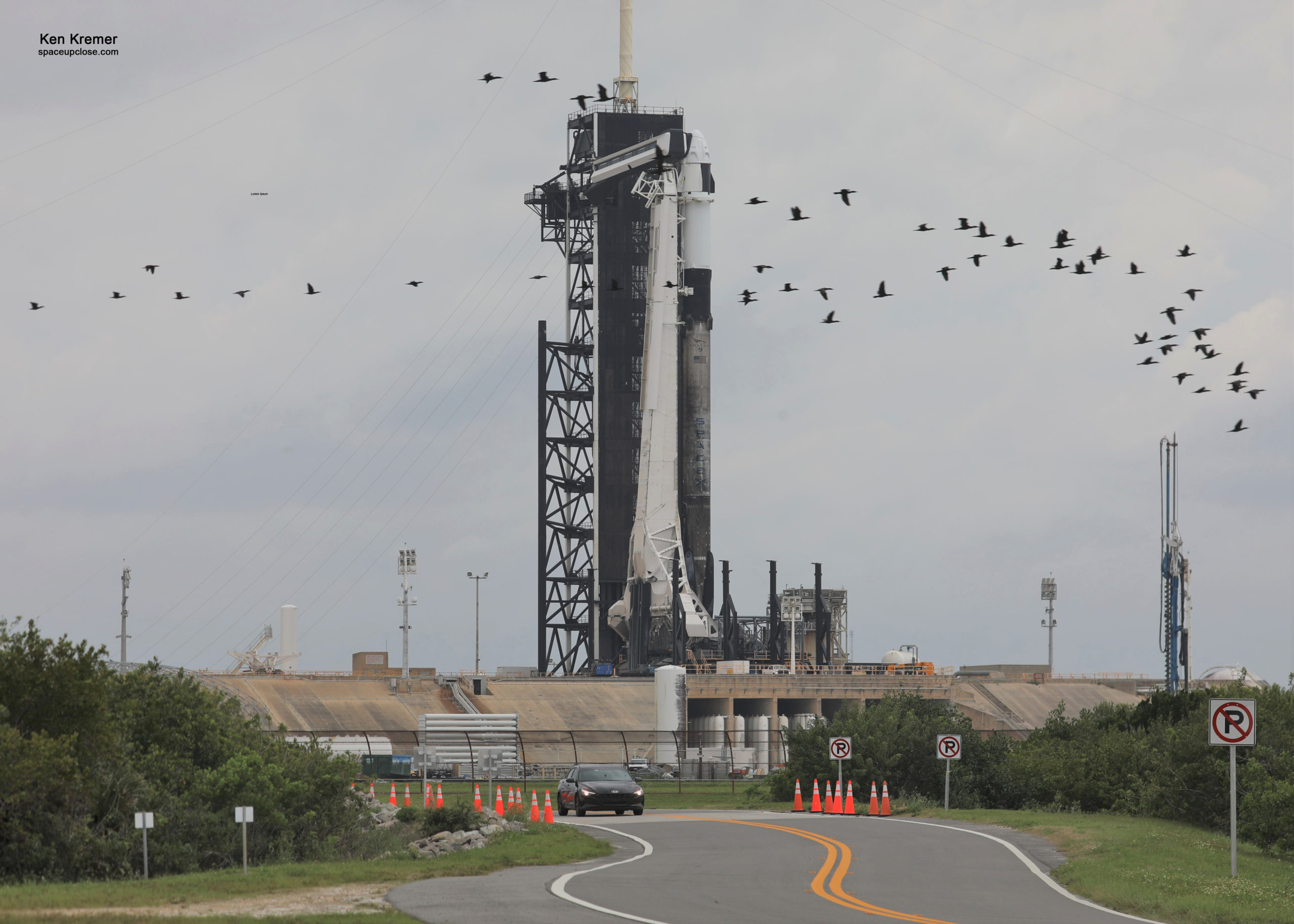
For SpaceUpClose.com & RocketSTEM
KENNEDY SPACE CENTER, FL – The first ever all private crew mission to the International Space Station (ISS) is ready for liftoff Friday morning, April 8, on a recycled SpaceX Falcon 9 rocket and Crew Dragon capsule on a history making 10 day mission sponsored by Axiom Space carrying a four person international crew of paying passengers led by a retired NASA astronaut from historic pad 39A from NASA’s Kennedy Space Center (KSC) on the Florida Space Coast.
All systems are “GO” with the Falcon 9 rocket and Crew Dragon vehicle, managers announced at a KSC media briefing Thursday afternoon, April 7 – weather permitting and looking rather favorable currently.
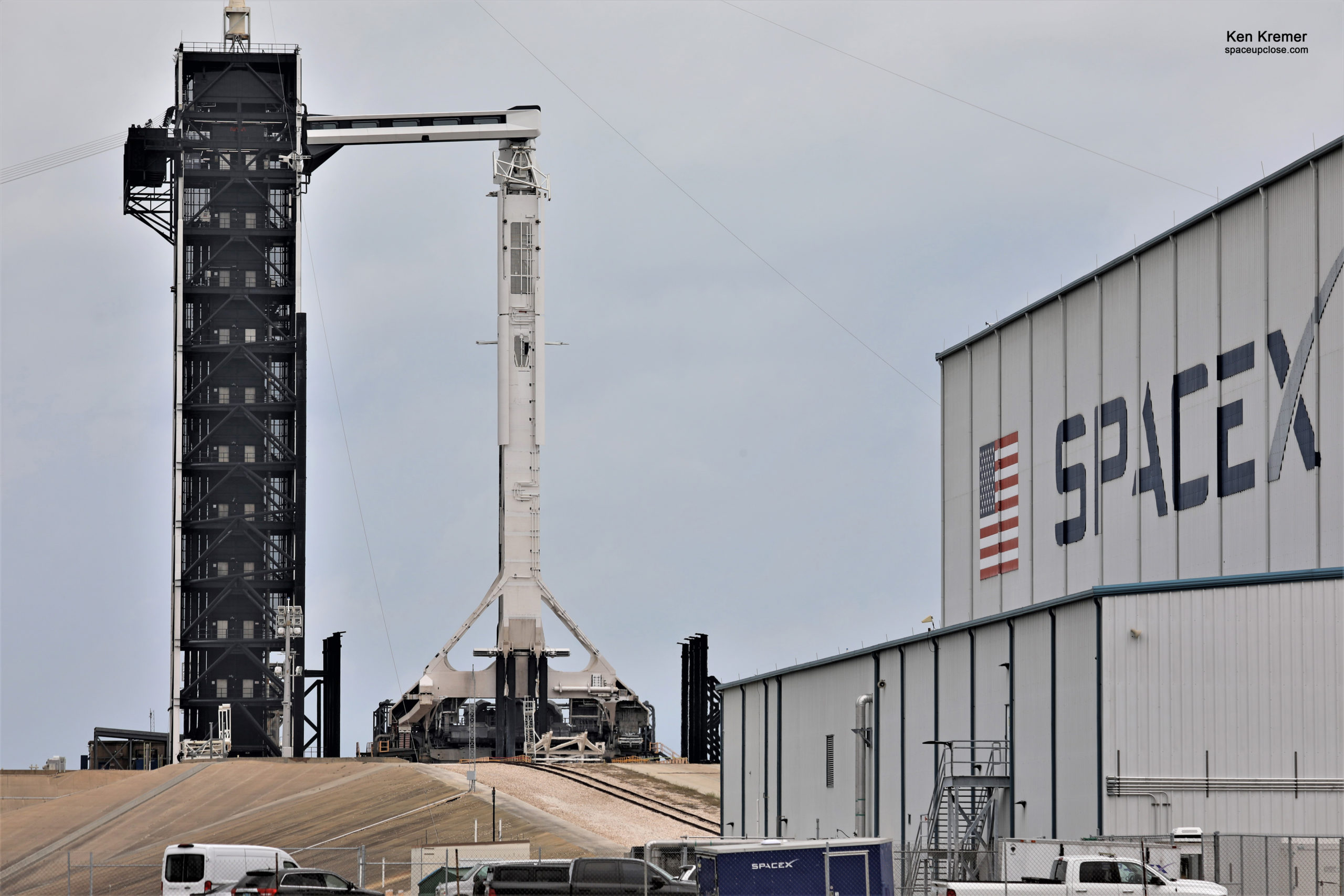
Liftoff of the 215-foot-tall (65 m) SpaceX Falcon 9 on the Axiom-1 (AX-1) private mission is scheduled at 11:17 a.m. EDT (1517 GMT) Friday, April 8, from Launch Complex 39A at NASA’s Kennedy Space Center in Florida.
All systems are looking good for tomorrow’s Falcon 9 launch of the @Axiom_Space Ax-1 mission to the @space_station; teams are keeping an eye on downrange weather along the ascent corridor. Webcast will go live at ~7:55 a.m. ET → https://t.co/N3MHSxCS0k pic.twitter.com/Tb76kDRQRz
— SpaceX (@SpaceX) April 7, 2022
Docking is scheduled for Saturday, April 9 at approximately 7:30 a.m. EDT. to the Harmony module’s space-facing port.
The historic AX-1 flight will be the first ever all private mission of humans to visit the ISS aboard a SpaceX Crew Dragon spacecraft – a major new milestone and approved and sanctioned under contract with NASA.
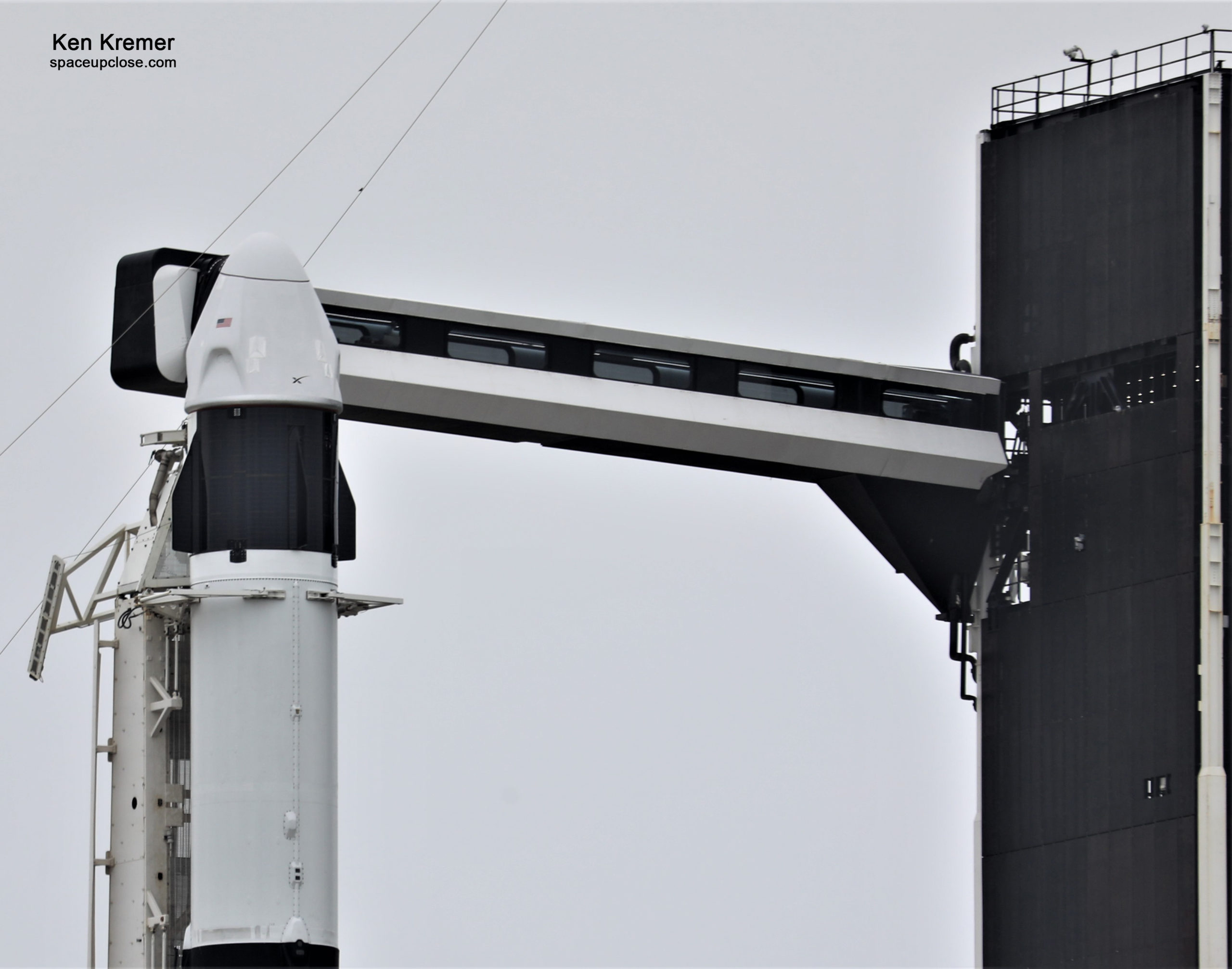
The crew members will be active conducting about 100 hours of science and research experiments and have undergone training by SpaceX and NASA – not merely flying as tourists looking out the window during their time docked at the ISS lasting about 8 of the 10 days on orbit.
Furthermore, it opens a new spaceflight era fostering the development of a commercial private economy in low Earth orbit (LEO) – simultaneously fortifying existing companies and bringing in many new companies to the high frontier.
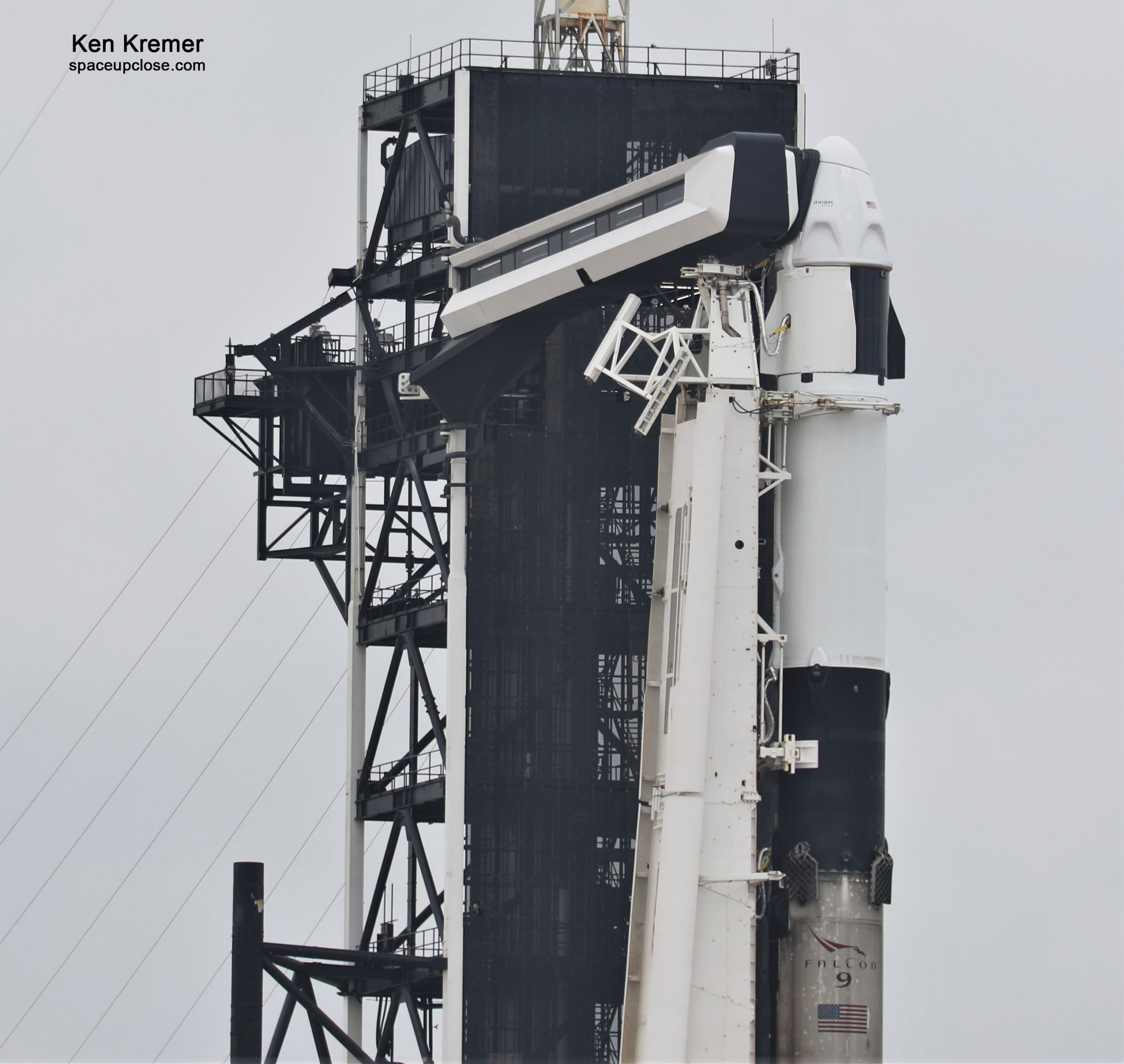
Previously spaceflight participants to the ISS flew as a lone crew member or in rare cases a two person crew member team accompanying a flight commanded by a professional cosmonaut in the case of Soyuz flights flown by Roscosmos, the Russian Space Agency .
The only other all private mission involved the SpaceX Inspiration 4 flight last year – a free flying SpaceX Crew Dragon mission which did not dock to the ISS
The four-person all-male multinational AX-1 crew is led by renowned retired NASA astronaut and four-time space flyer Commander Michael López-Alegría of the U.S. and Spain, who now is a manager at Texas-based Axiom Space.
The other three are wealthy entrepreneurs have all paid for their spaceflight: Pilot Larry Connor of the U.S., Mission Specialist Eytan Stibbe of Israel, and Mission Specialist Mark Pathy of Canada.
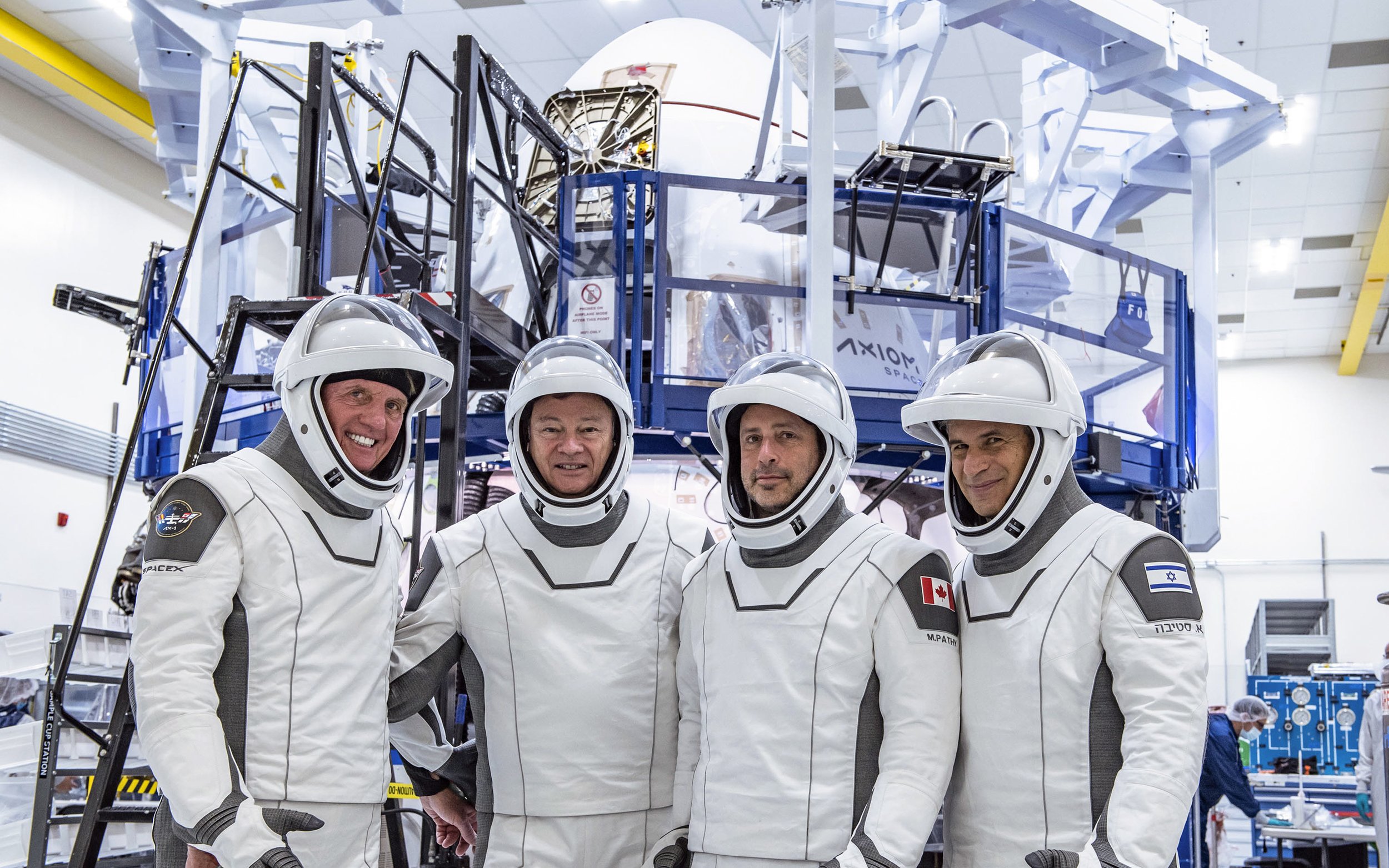
Those three are reportedly paying some $55 million each for their seats.
Axiom is under contract with SpaceX to pay the overall mission costs including López-Alegría -subdivided by the three other crew members paying for the seats.
The quartet will launch on a flight-proven SpaceX Falcon 9 1st stage booster B1062 rocket.
They will be seated aboard SpaceX Dragon Endeavour now flying on its third flight to the space station. It previously flew the Demo-2 and Crew-2 missions.
The AX-1 will briefing join 7 other astronauts from the U.S., Germany and Russia already serving aboard the station as part of Expedition 67 for long duration flights launched aboard SpaceX Crew Dragon and Russian Soyuz capsules.
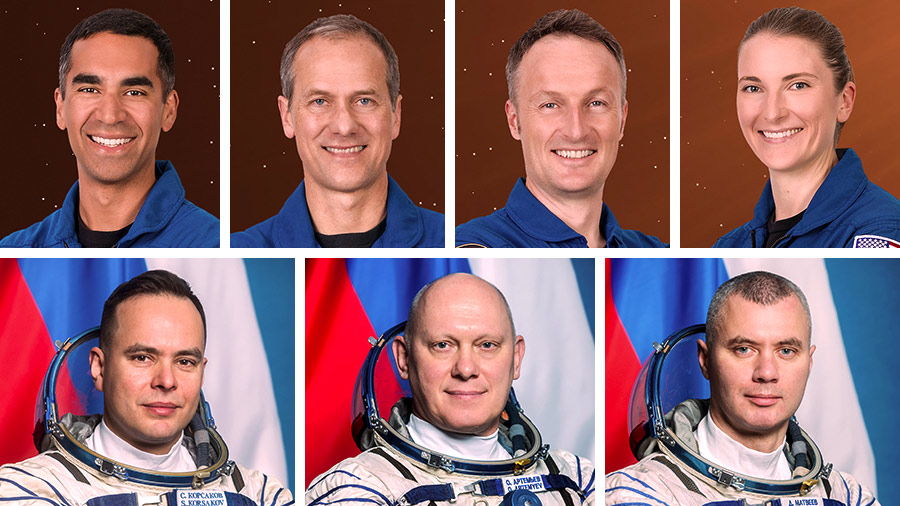
You can watch the launch live on NASA Television, the NASA app, and the agency’s website beginning at 10:15 a.m. EDT Friday, April 8.
Alternatively you can watch the Axiom Space broadcast that begins at about 7:50 a.m.
The broadcast will end after orbital insertion approximately 15 minutes after launch.
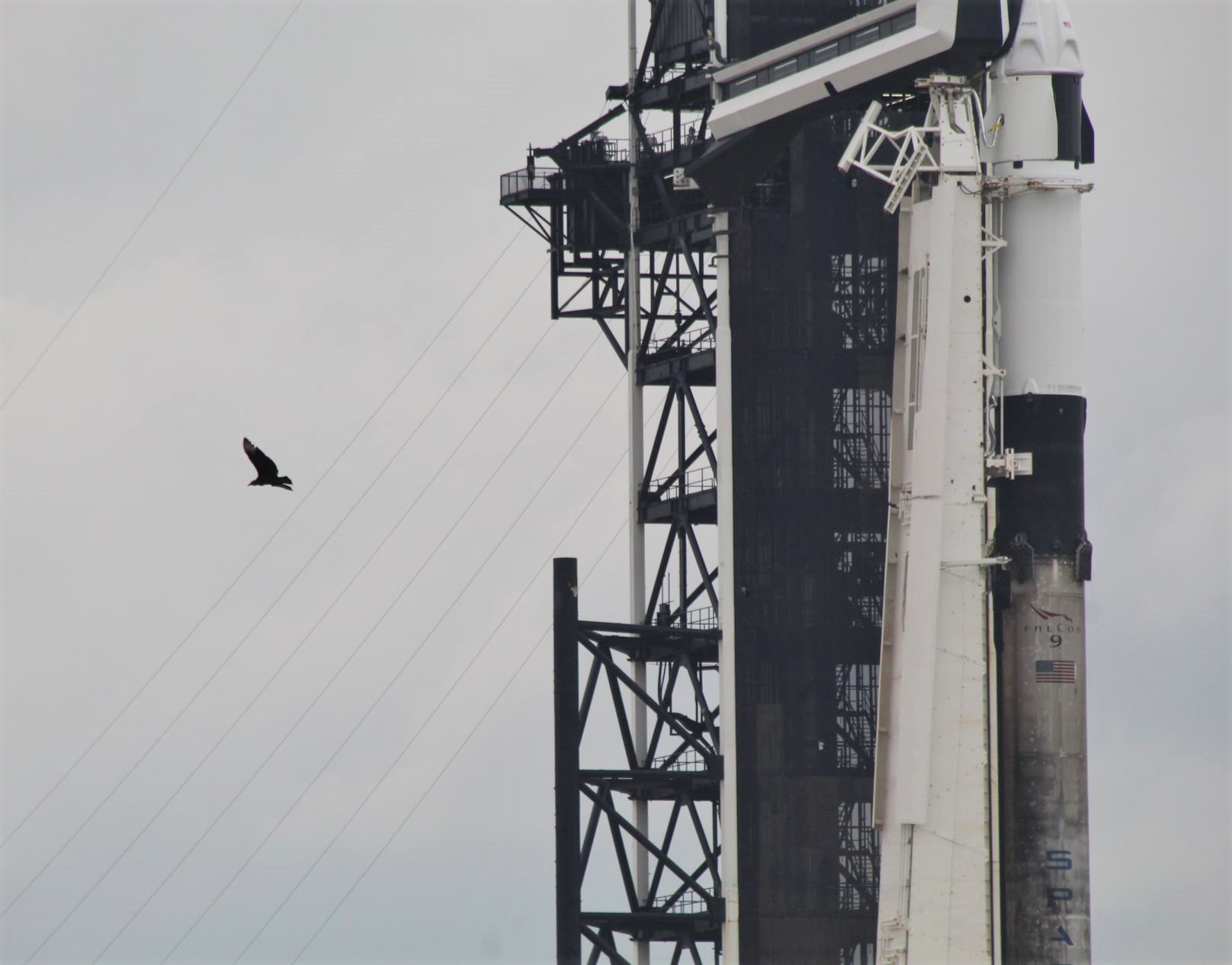
Enjoy our photos of the SpaceX Falcon 9 vertical at pad 39A taken by the Space UpClose team of Ken Kremer and Jean Wright during remote camera setup today, Thursday, April 7.
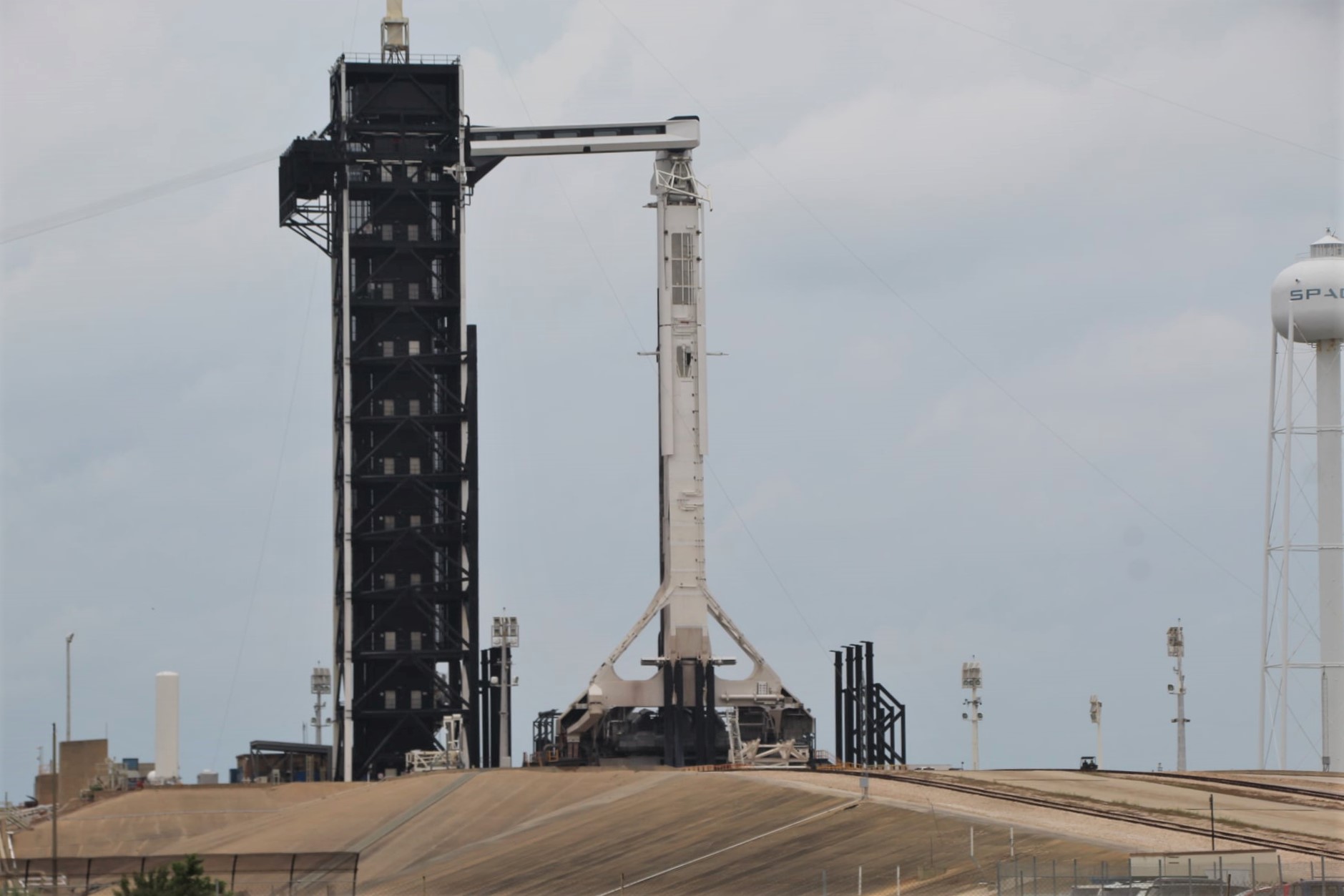
We also captured joint photos taken with the NASA SLS moon rocket vertical at pad 39B taken at different locations at KSC and offsite on Canaveral National Seashore
Weather looks very favorable at this time for Friday.
Weather officers with the 45th Weather Squadron are predicting a 90% chance of favorable weather conditions for launch, with the primary concern being liftoff winds.
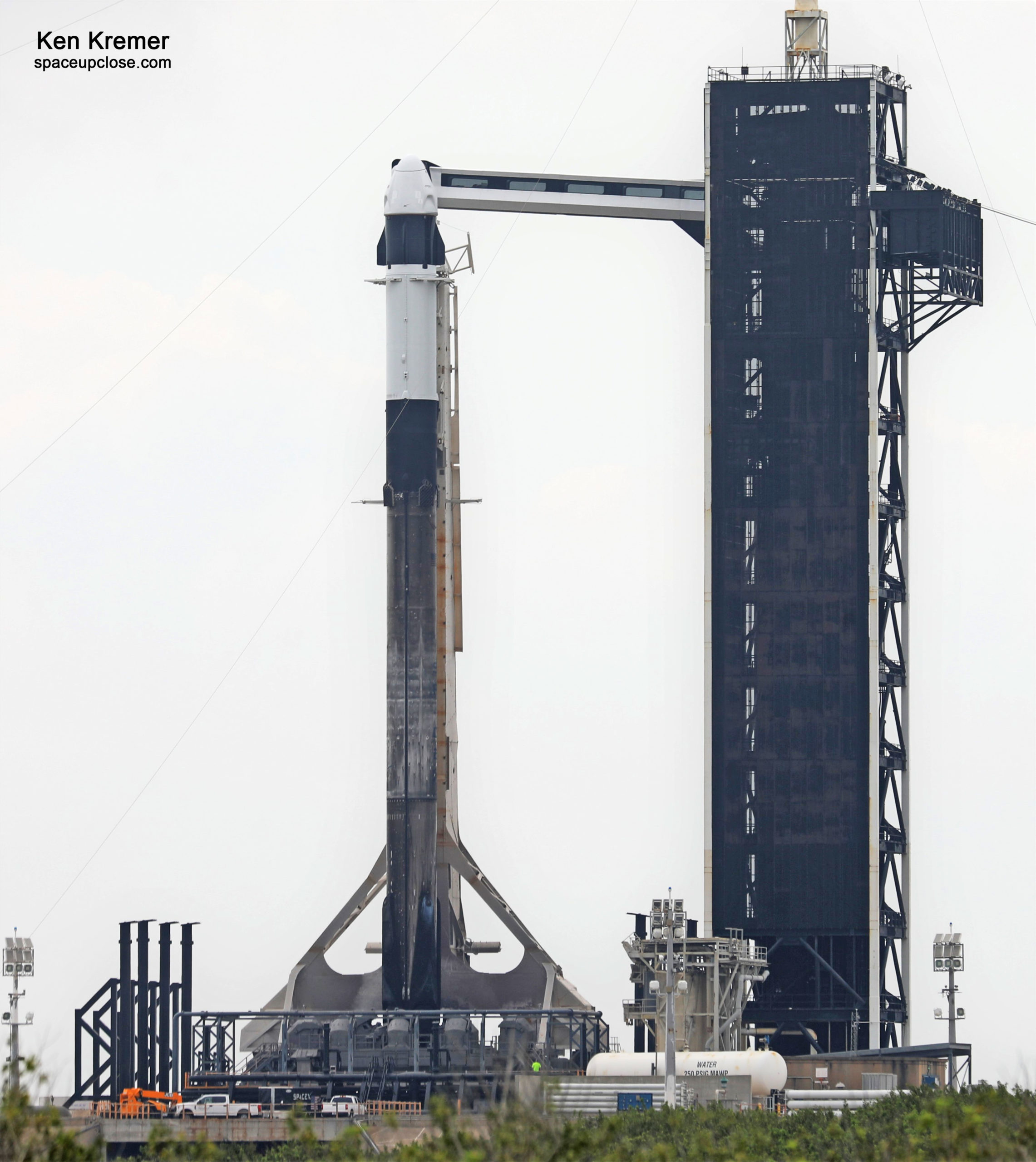
Teams also are monitoring the down range weather for the flight path of the Crew Dragon in case of an abort.
The weather outlook drops slightly to 80% GO in case of a delay to Saturday, April 9 with a new launch time of 10:54 a.m. ET, 1454 GMT.
AX-1 will mark the fifth flight for this Falcon 9 first stage booster B1062 which is now rather sooty and the 2nd crew flight mission after Inspiration 4.
It previously supported launch of GPS III Space Vehicle 04, GPS III Space Vehicle 05, Inspiration4, and one Starlink mission.
Following stage separation, Falcon 9’s first stage will land on the A Shortfall of Gravitas droneship (ASOG) stationed in the Atlantic Ocean some 8 minutes after blastoff.
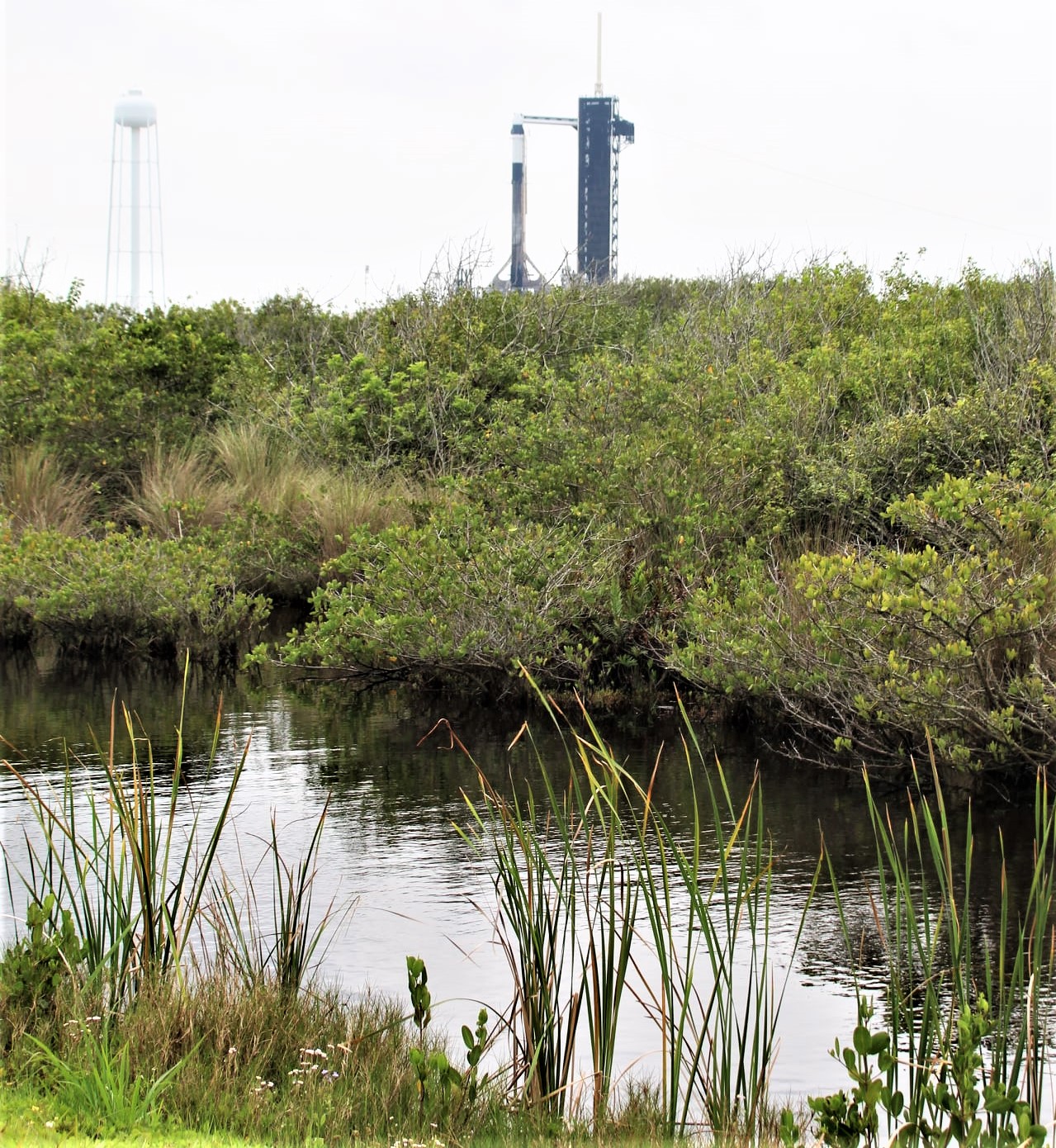
This is just the first step into commercialization of space by Axiom
Axiom already has 3 more AX missions to the ISS planned starting next year in 2023
And Axiom also planes to add 4 commercial modules to the IAA starting in May 2024, Axiom officials told me at the April 7 media briefing
The first two will be habitation module, then a dedicated science module for research experiments.
Finally a power, propulsion and thermal module that will have solar arrys to add power, and propulsion capabilities to reboost the ISS.
Eventually the Axiom modules will be detached and form an independent commercial space station as the ISS nears the end of its life around 2030.
To follow along with the Ax-1 mission with NASA visit:
https://www.axiomspace.com/ax1 and the Ax-1 Briefings, Events and Broadcast Schedule.
Axiom-1 is also carrying some NASA sponsored research experiments up to the iSS and will return some cargo and refrigerated research specimens home from the ISS at the conclusion of the flight and return to Earth.
The Ax-1 mission traveling to the @Space_Station represents a culmination of @NASA’s efforts to foster a commercial market in low-Earth orbit, building on the many commercial experiments that have been conducted aboard station. https://t.co/1LWn5kmM55
— ISS Research (@ISS_Research) April 6, 2022
“NASA is working to build a robust low-Earth orbit economy and working with private companies to support the agency’s goals. In doing so, NASA can become one of many customers of this robust economy as the agency focuses on landing the first woman and first person of color on the lunar surface as part of the Artemis program,” says NASA.
Here are several of the specific NASA sponsored research experiments aboard AX-1:
During their eight days aboard the orbiting laboratory, the crew will conduct many Ax-1-specific experiments, including TESSERAE Ax-1. The study further tests self-assembly and docking of an autonomous, self-assembling robotic swarm of tiles in microgravity. The study builds on a previous test aboard station in 2020 in which seven tiles successfully self-assembled in microgravity. The investigation helps assess the feasibility of construction of satellites and space habitats in orbit to support future missions to the Moon and Mars and space tourism in low-Earth orbit. The ISS National Laboratory sponsors the experiment.
Robotic helpers
Nanoracks-GITAI Robotic Arm successfully demonstrated the versatility and dexterity in microgravity of a robot designed by Japanese company GITAI Japan Inc. The experiment was conducted under the pressurized environment inside the Nanoracks Bishop Airlock, the space station’s first commercial airlock. Results could support development of robotic labor to support crew activities and tasks as well as servicing, assembly, and manufacturing tasks while in orbit. Robotic support could lower costs and improve crew safety by having robots take on tasks that could otherwise expose crew members to additional hazards. The technology also has applications in extreme and potentially dangerous environments on Earth, including disaster relief, deep-sea excavation, and servicing nuclear power plants. The ISS National Laboratory sponsors the experiment.
Toward lunar laundromats
Astronauts on the space station wear an item of clothing several times, then replace it with new clothes delivered on resupply missions. Limited cargo capacity makes this a challenge, and resupply is not an option for longer missions such as to the Moon and Mars. Procter & Gamble Company (P&G) has developed Tide Infinity, a fully degradable detergent formulated specifically for use in space. Their investigation, PGTIDE, studies the performance of the detergent’s stain removal ingredients and stability in microgravity. Space station crew members are involved in storing PGTIDE samples, flown to station aboard SpaceX’s 24th commercial resupply mission (SpaceX CRS-24), and conducting stain removal activities. If the technology is proven in space, P&G says it plans to use these cleaning methods and detergent to advance sustainable, low-resource-use laundry solutions here on Earth. The ISS National Laboratory sponsors the experiment.
Commercial cancer research
The private astronauts aboard the Ax-1 mission will also work on Modeling Tumor Organoids in LEO (Ax-1). The experiment demonstrates processes for in-orbit pre-cancer and cancer cell culture confocal fluorescence microscopy, an important tool for biological research. It also seeks to provide real-time data transfer in support of future pre-cancer and cancer stem cell research. The investigation seeks to develop models that could inform and accelerate the development of countermeasures and enhance crew safety on future space missions. It could also provide tools for detection of and therapies for pre-cancer, cancer, and a variety of other diseases on Earth. The ISS National Laboratory sponsors the experiment.
Coming home on a private mission
The Ax-1 private astronaut mission also enables a method for NASA to return additional scientific samples and station payloads to Earth. In addition to the private astronauts, some of the payloads the Ax-1 mission’s Crew Dragon is planned to carry home include:
- Peppers grown in space as a part of the PH-04 plant experiment. Both the Crew-2 and Crew-3 astronauts performed harvests of the peppers. This investigation is part of ongoing efforts to establish ways to grow food crops on long-duration space missions.
- Samples from the Aging and Heart Health study conducted during Ax-1. The study analyzes human cells for genetic markers of cellular aging and explores how cardiac-like cells adapt to microgravity. A better understanding of the mechanisms of cellular aging and cardiac adaptation could support crew health and success on future space missions.
- An empty Nitrogen/Oxygen Recharge System (NORS) tank. These containers are used to fill the oxygen and nitrogen tanks that supply the needed gases to the station’s airlock for spacewalks, and as a secondary method to replenish the atmosphere inside the space station.
…..
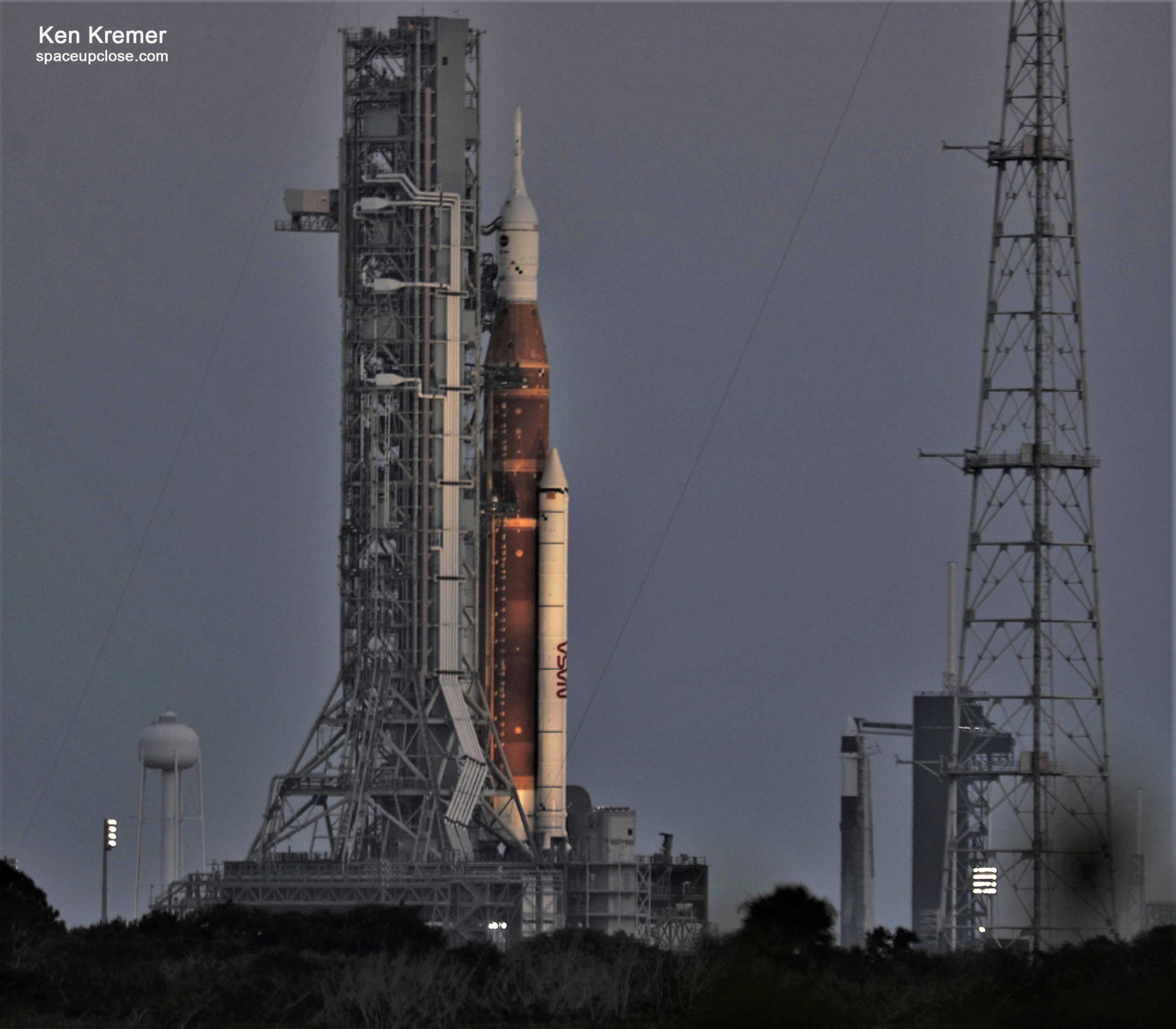
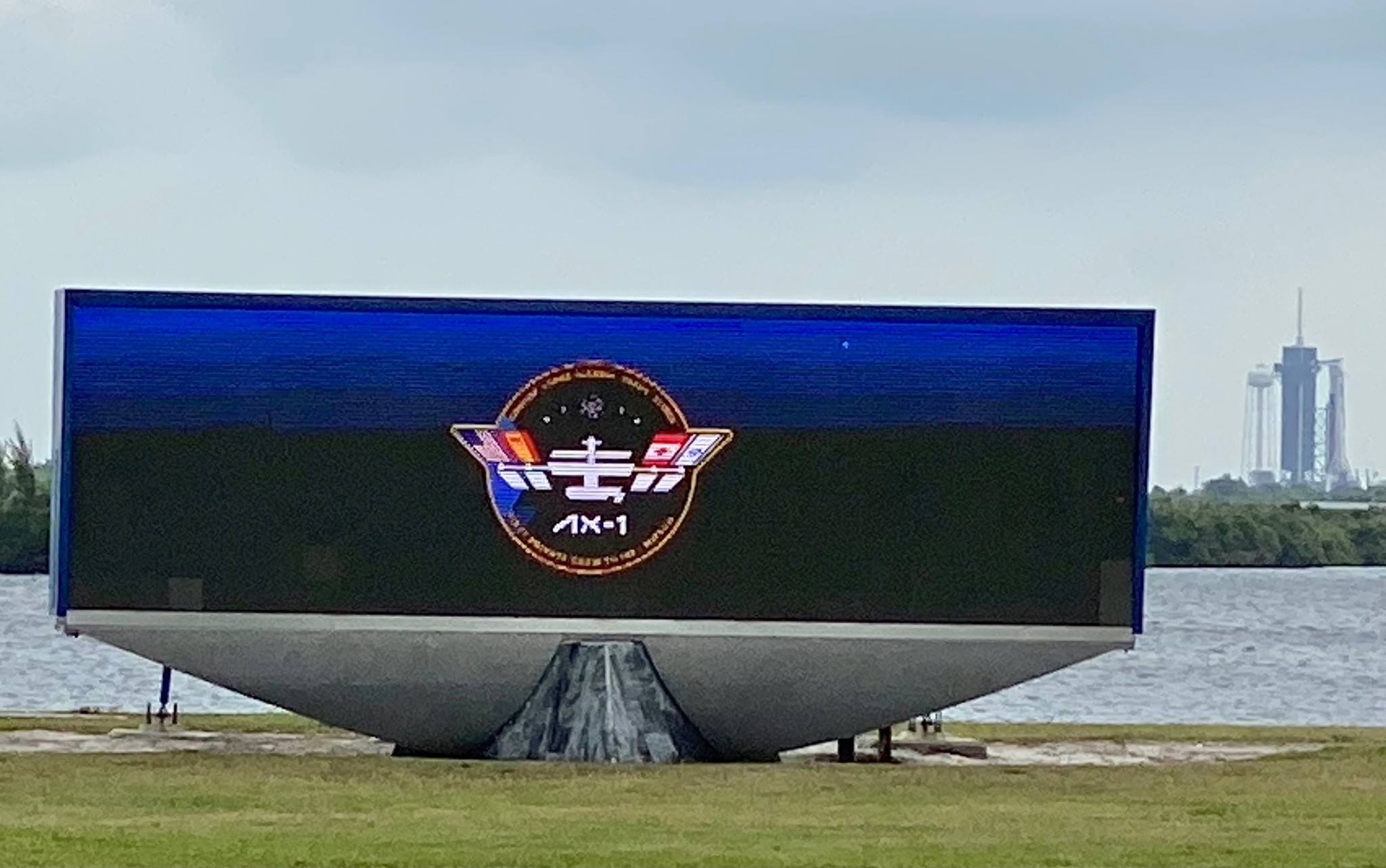
Watch Ken’s commentary about NASA SLS WDR demo test, NASA Crew 4 and Space AX-1 mission
Apr 6: WFTV ABC 9 Orlando featured my comments about 1st fully private astronaut launch to ISS by SpaceX on AX-1 mission:
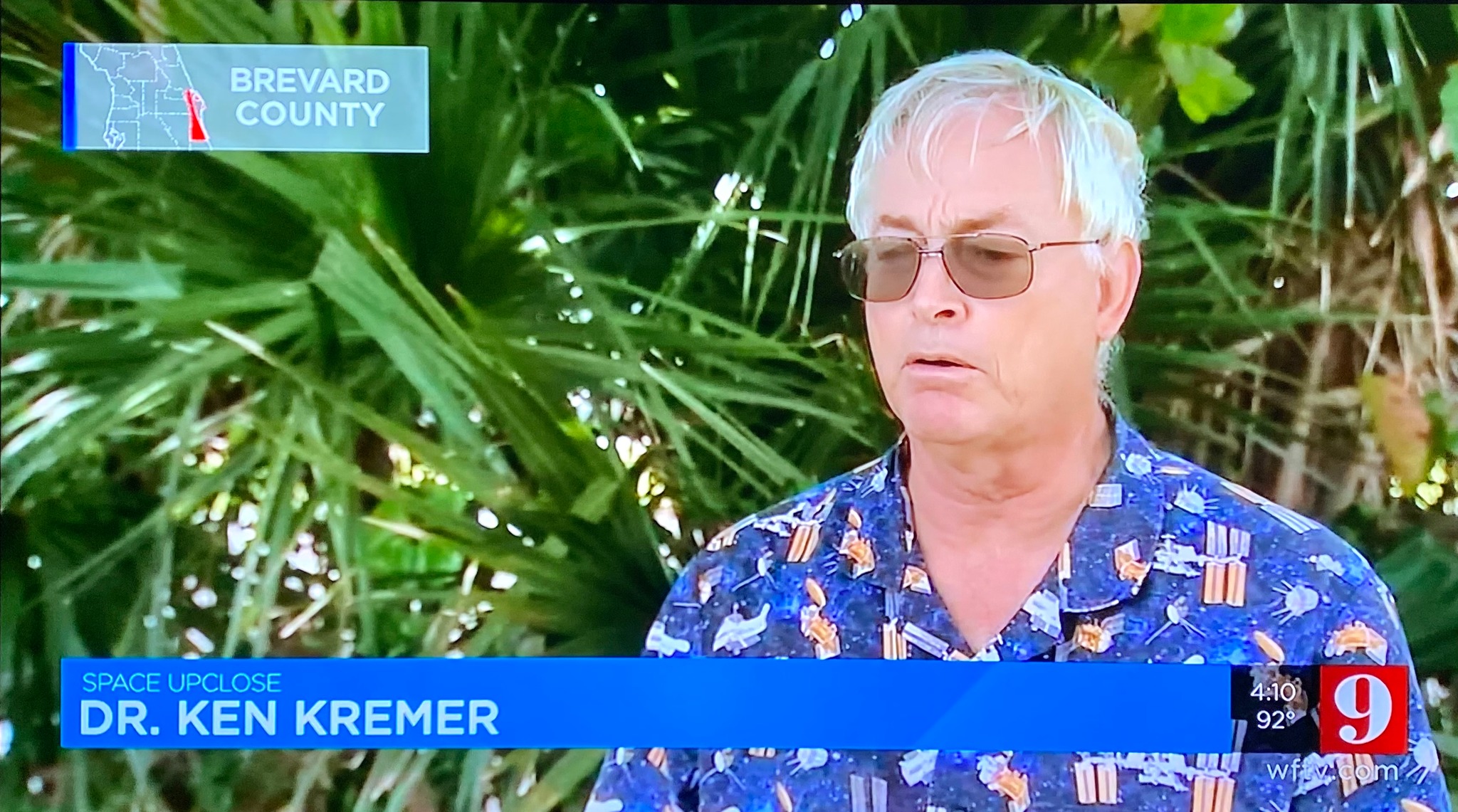
Apr 4 & 5: WFTV ABC News Orlando and Fox 35 Orlando featured my comments about NASA SLS WDR wet dress rehearsal countdown and fueling demo test and human launches to ISS
https://www.fox35orlando.com/news/nasa-resumes-artemis-i-wet-dress-rehearsal-countdown
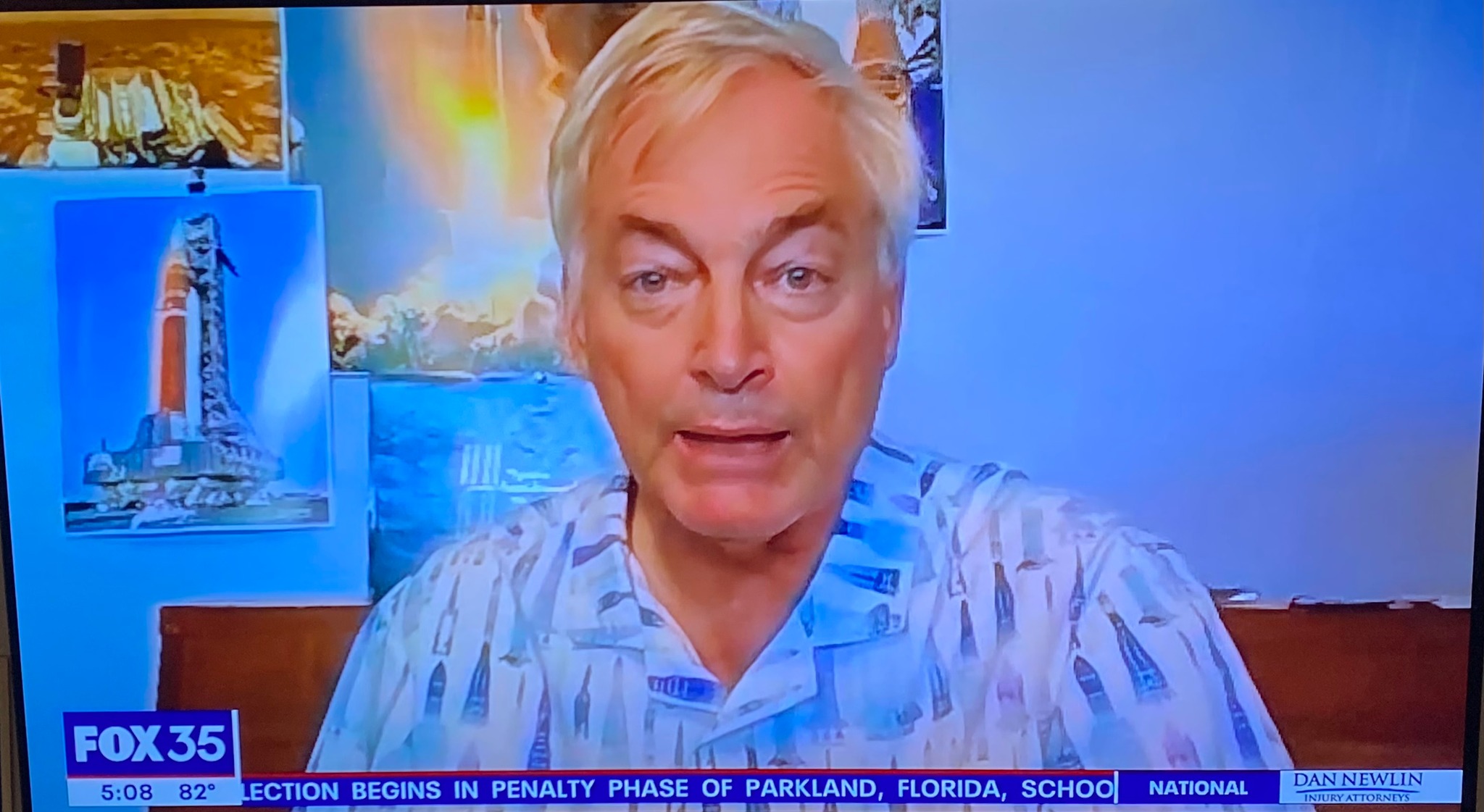
Watch Ken’s continuing reports about SpaceX Axiom-1, Artemis, SLS, Orion and NASA missions, JWST, IXPE, DART, Lucy Asteroid mission, GOES, SpaceX Cargo and Crew Dragons, SpaceX Starlink, Commercial Crew and Starliner and Crew Dragon, Blue Origin and Space Tourism, and onsite for live reporting of upcoming and recent SpaceX and ULA launches including Crew 1 & 2 & 3, ISS, Solar Orbiter, Mars 2020 Perseverance and Curiosity rovers, NRO spysats and national security missions and more at the Kennedy Space Center and Cape Canaveral Space Force Station.
Stay tuned here for Ken’s continuing Earth and Planetary science and human spaceflight news: www.kenkremer.com –www.spaceupclose.com – twitter @ken_kremer – email: ken at kenkremer.com
Dr. Kremer is a research scientist and journalist based in the KSC area, active in outreach and interviewed regularly on TV and radio about space topics.
………….
Ken’s photos are for sale and he is available for lectures and outreach events
Please consider supporting Ken’s work by purchasing his photos and/or donating at Patreon:
https://www.patreon.com/kenkremer
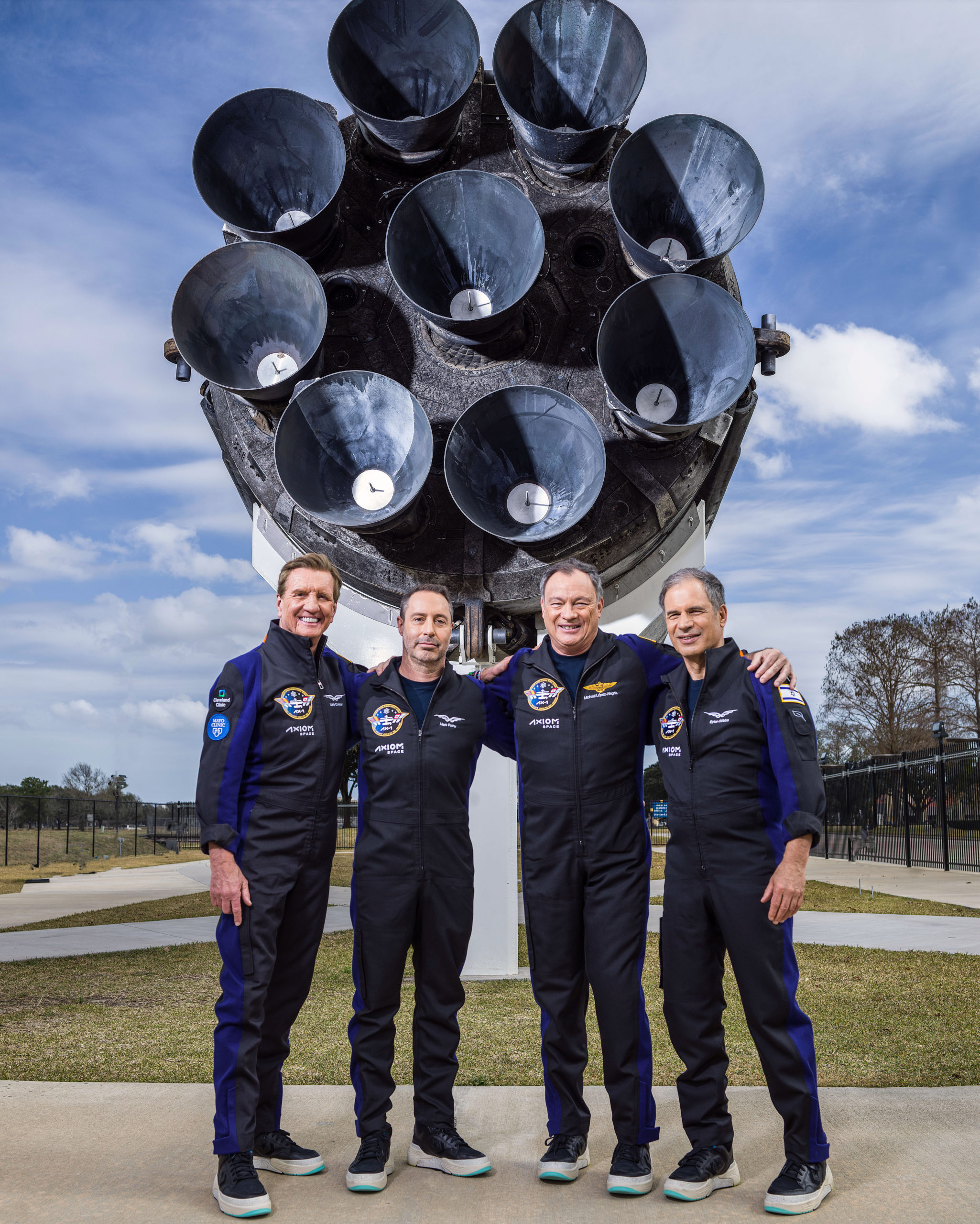
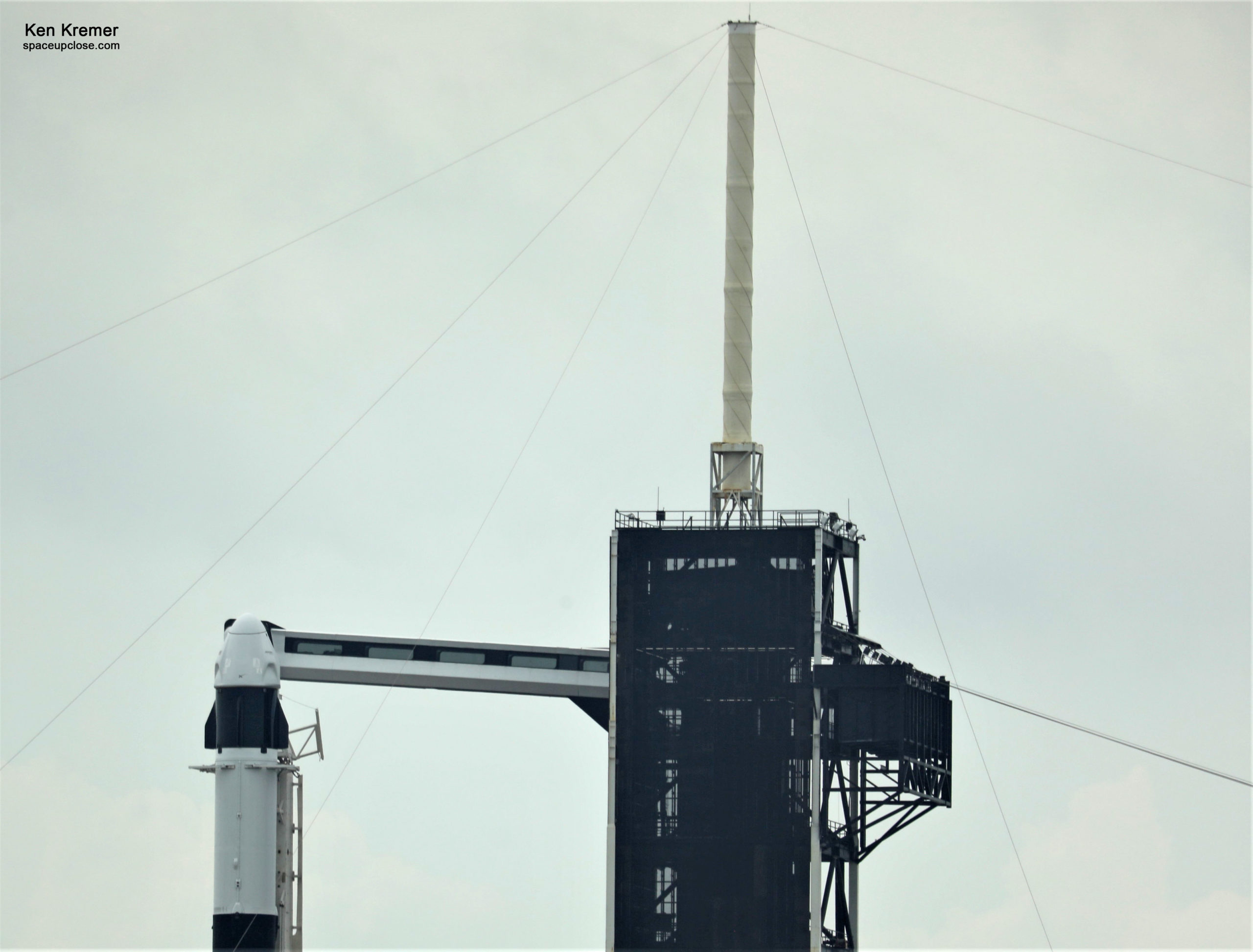
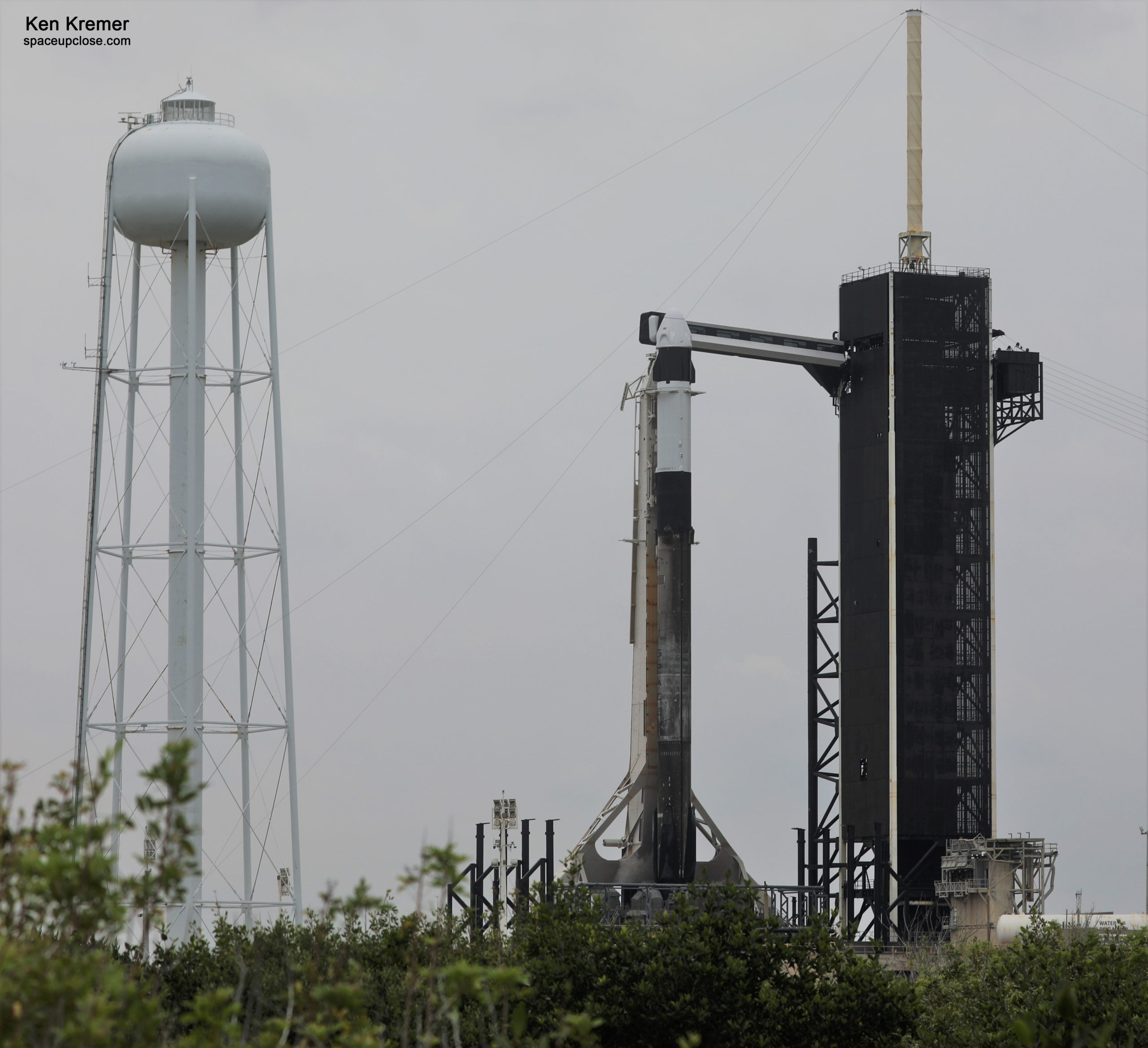
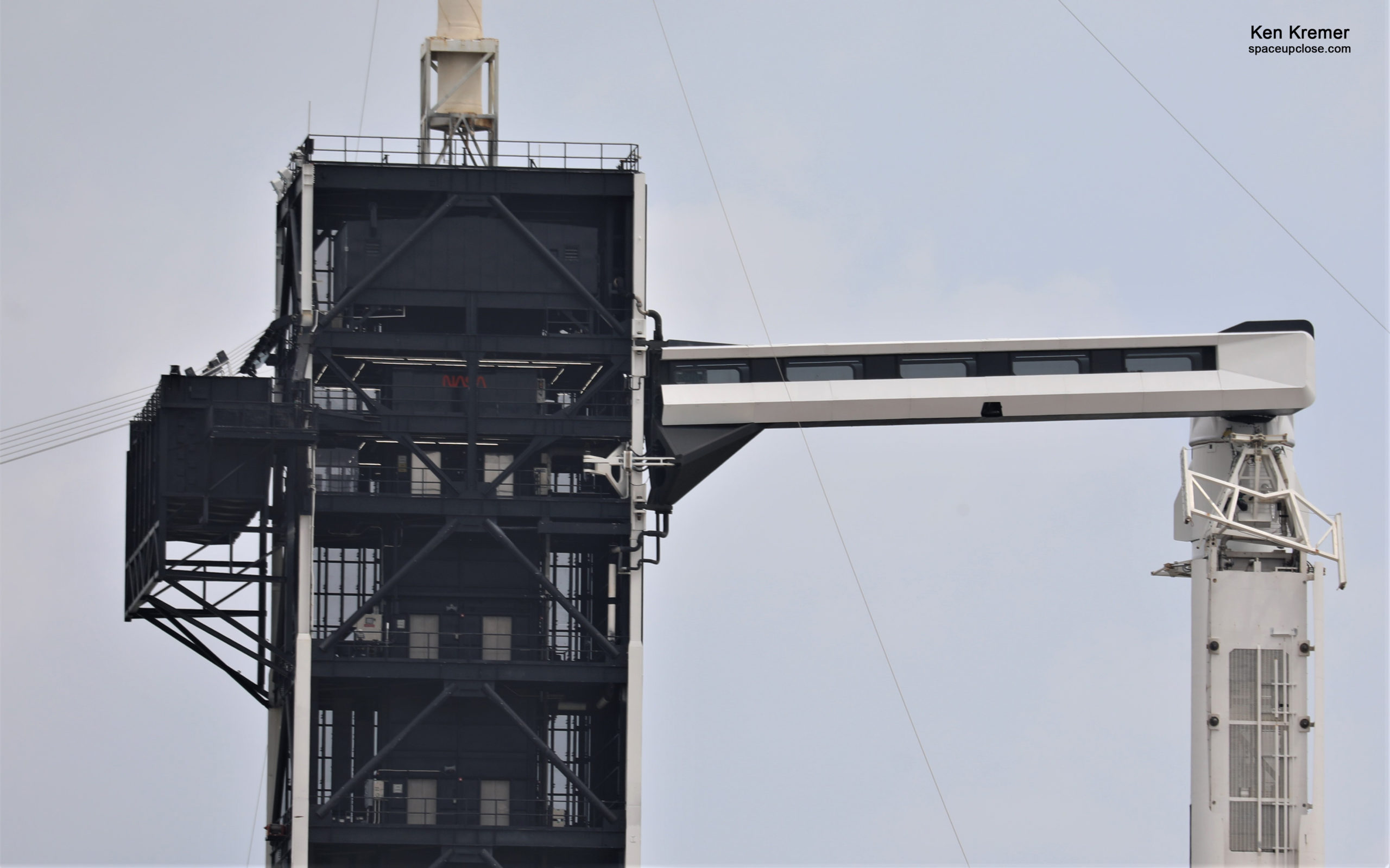
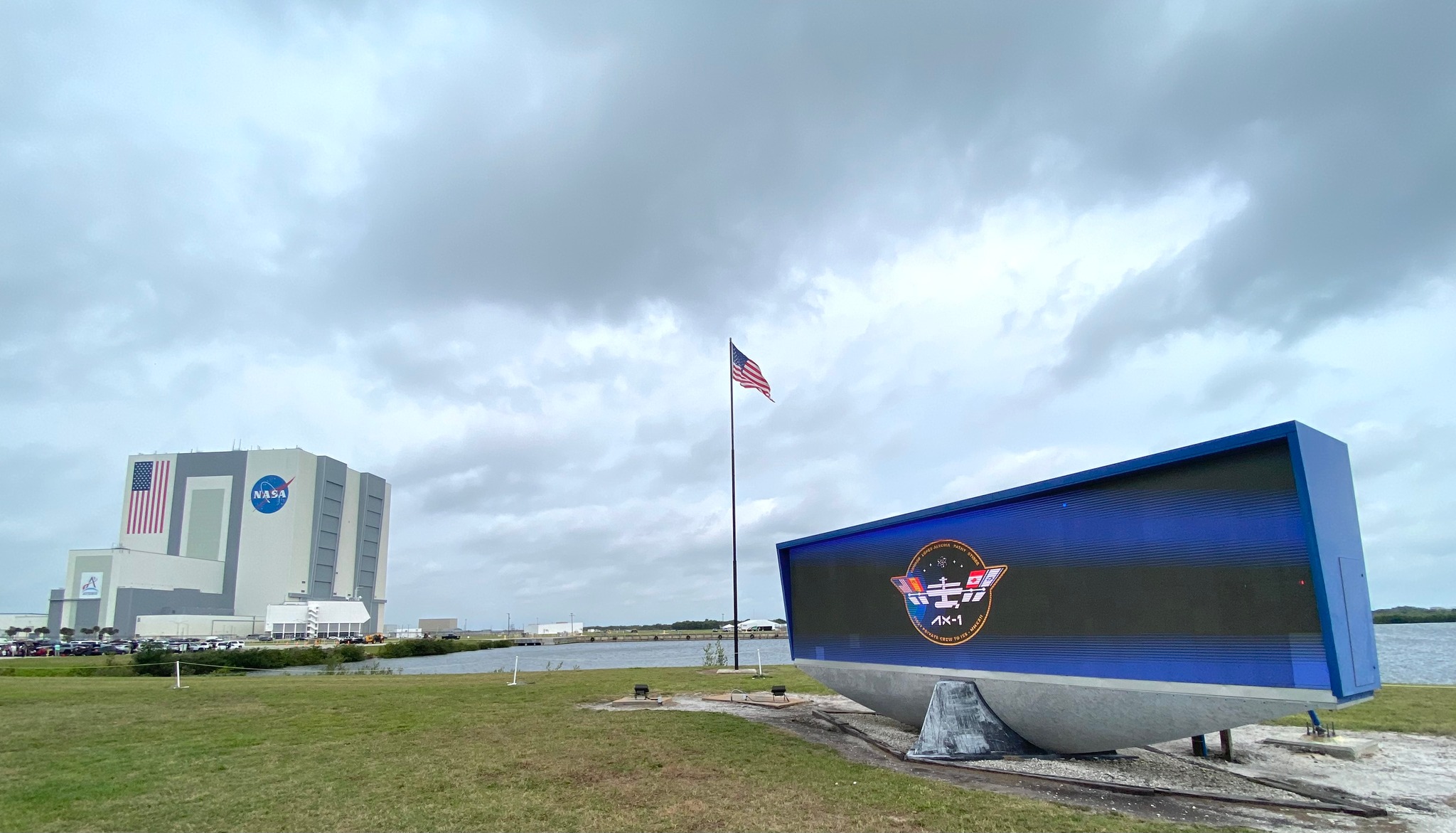
x



